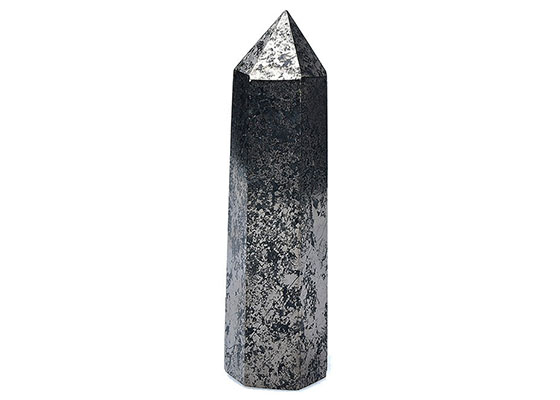Fool’s gold, also known as pyrite, is a mineral that has long been valued for its unique properties and uses. While it may look similar to gold, it is actually a different mineral altogether, and has a range of applications that make it valuable in various industries.
The Properties of Fool’s Gold
To understand the uses of fool’s gold, it is important to first understand its properties. Fool’s gold is a mineral composed of iron sulfide, with a chemical formula of FeS2. It typically has a bright, metallic luster, and ranges in color from brass-yellow to a pale, silvery yellow.
In terms of physical properties, fool’s gold is relatively hard, with a rating of 6 to 6.5 on the Mohs scale of hardness. It is also quite heavy, with a specific gravity of 4.9 to 5.2. These properties make it a useful mineral for a range of applications.
Traditional Uses of Fool’s Gold
Fool’s gold has been valued for centuries for its decorative and symbolic properties. In ancient times, it was often used in jewelry and other ornaments, either as a substitute for gold or as a complementary material. It was also used as a symbol of wealth and prosperity in many cultures, including the ancient Greeks and Romans.
Fool’s gold has also had a range of other symbolic uses throughout history. In some cultures, it was associated with the sun, and was thought to have healing properties. In other cultures, it was used in religious ceremonies or as a talisman to ward off evil spirits.
Perhaps most famously, fool’s gold was used as a form of currency in the United States during the 19th century. During the gold rush, many people were fooled by the mineral’s similarity to real gold, and it was often used as a substitute in transactions. This led to the creation of the term “fool’s gold,” which is still used today to describe anything that appears valuable but is actually worthless.
Modern Uses of Fool’s Gold
While fool’s gold may no longer be used as a form of currency, it still has a range of modern uses in various industries. One of its most common uses is in the production of sulfuric acid, which is a key component in many industrial processes. Because fool’s gold is composed of iron sulfide, it can be used as a source of sulfur for these processes.
Fool’s gold is also used in electronics and aerospace technology. Its unique properties make it useful in the production of semiconductor materials, which are used in a range of electronic devices. It is also used in the production of alloys and other materials that are used in the aerospace industry.
In addition to its industrial uses, fool’s gold also has a range of scientific applications. Geologists and mineralogists use it to study the formation of minerals and to identify the composition of rock samples. It is also used in other scientific fields, such as archaeology and forensic science.
Potential Dangers and Precautions
While fool’s gold may have many useful properties, it can also be dangerous if not handled properly. One of the main risks associated with fool’s gold is the presence of arsenic, which can be toxic if ingested or inhaled. If you are working with fool’s gold, it is important to take precautions to protect yourself from exposure.
Some precautions that can be taken include wearing a dust mask when handling fool’s gold, washing your hands thoroughly after working with the mineral, and avoiding inhaling any dust or particles that may be released during processing. It is also important to handle fool’s gold carefully, as it can be quite brittle and may break easily.
Conclusion
Fool’s gold, while not as valuable as real gold, is still an important mineral with a range of uses in various industries. Its unique properties make it useful in electronics, aerospace technology, and industrial processes. It also has a long history of decorative and symbolic uses in many cultures, and has been used as a form of currency in the past.
While fool’s gold can be useful, it is important to take precautions when handling it due to the potential risks associated with exposure to arsenic. By taking the necessary precautions, however, fool’s gold can be a valuable mineral for a range of applications.
In conclusion, fool’s gold is a mineral that has been valued for centuries for its unique properties and uses. From its historical use as a decorative material and form of currency to its modern uses in industrial processes and electronics, it remains an important mineral in various industries today. By understanding its properties and taking the necessary precautions, we can continue to harness the potential of this versatile mineral for years to come.




